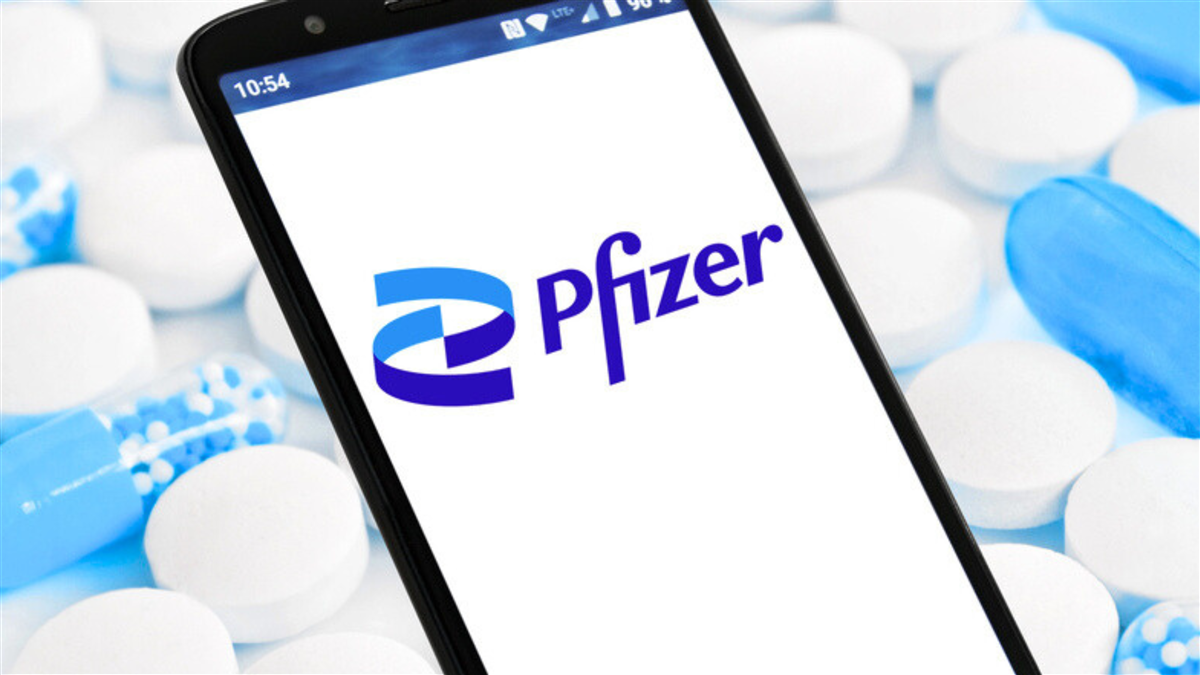Buffett's $325B Cash Hoard: Gold Next? (From Golden Portfolio)
TrumpRx Brings Pfizer Into the Green—Is It a Buy? Written by Jordan Chussler on October 7, 2025 
Key Points - Pfizer just entered into a partnership with the U.S. government to provide direct-to-consumer drugs.
- Via the TrumpRx exchange, the company will make some of its drugs 50% more affordable.
- Underlying fundamentals suggest the stock is benefiting from a short-term, news-driven bump. Shareholders should be aware of ongoing risks.
Pfizer (NYSE: PFE) is no stranger to income investors. The drugmaker, famous for treatments including Lipitor, Viagra, and Zoloft, has now increased its dividend payout for 16 consecutive years. And while that falls short of qualifying the stock as a Dividend Aristocrat, its current yield of 6.29%—or $1.72 per share annually—has helped PFE find its way into many portfolios. However, from a share appreciation standpoint, Pfizer has lost some of its appeal. After reaching its all-time high (ATH) on Dec. 17, 2021, driven by increased demand for its COVID-19 vaccine, Comirnaty, the stock has declined by nearly 47%. This year, not much has changed. Healthcare stocks, in general, are having a lackluster year, ranking eighth among the S&P 500’s 11 sectors with a 5.27% year-to-date (YTD) gain. Pfizer, for its part, was helping drag down the sector. Before last week, the Big Pharma staple was down more than 11% in 2025. But on a big announcement by the Trump administration, shares of PFE took off the last week of September, climbing nearly 16% higher on the news that the company reached a landmark agreement on Sept. 30 with the U.S. government to lower drug costs for American patients. That brought Pfizer out of the red for the year, with the pharmaceutical firm now sitting at a YTD gain of 2.86%. But are the plans for TrumpRx enough to keep it in the green? And if so, does that make PFE a buy? Here’s what you need to know. While headlines focus on Tesla's car sales, tech analyst Jeff Brown says the real story is Tesla's role in a $25 trillion AI revolution — one that Nvidia's CEO himself has called a "multi-trillion-dollar future industry" — and he's uncovered a little-known stock 168 times smaller than Nvidia that could be positioned to ride this breakthrough. Click here now to see the full report Pfizer’s $70 Billion Pledge to Make Drugs Affordable Again In response to a letter issued by President Trump in July, Pfizer has voluntarily agreed to “implement measures designed to ensure Americans receive comparable drug prices to those available in other developing countries,” according to the company’s press release. That agreement will provide investors with “certainty from tariffs” in what has been a year plagued by uncertainty. Additionally, the deal entails clarity on pricing frameworks and an expanded investment that, over the course of a three-year grace period, will allow the Big Pharma mainstay to balance its pricing approach between the U.S. and global markets. The company stated that it would inject $70 billion into U.S. research and development (R&D) and capital projects (e.g., manufacturing) over the next few years to achieve those goals. But as much as the news was a short-term price driver for PFE, questions remain. According to experts, the deal will almost certainly lower the company’s top line. And with 25% of the pharmaceutical industry’s revenue currently being allocated for R&D projects, big drugmakers will be faced with the challenge of funding research with fewer dollars derived from revenue. The agreement comes alongside the administration’s announcement of TrumpRx—a website structured similarly to Mark Cuban’s CostPlus Drugs that aims to facilitate direct-to-consumer (D2C) sales. TrumpRx.gov is expected to launch sometime in 2026, with Pfizer being a major supplier of medications available via that exchange, marketing its drugs for D2C at an expected 50% discount. However, with Pfizer likely to be dealing with narrower margins, the company’s financials—both past and present—can contextualize what this could mean for shareholders. Pfizer Keeps Beating Earnings, but Fundamentals Tell a Different Tale The drugmaker has enjoyed eight consecutive quarterly earnings beats. The last time Pfizer missed on earnings (as well as revenue) estimates was Q3 2023. While that has been a net positive for investors, the company’s underlying fundamentals tell a different story. In 2021, when shares of PFE hit their ATH, Pfizer posted net income (i.e., profits) of $21.9 billion. One year later, profit remained strong at $31.4 billion. But in 2023, that slipped to just $2.1 billion. Last year, net income recovered somewhat at $8 billion, and on a trailing 12-month basis, it stands at $10.7 billion. Net income is showing that it’s recovering from its recent low in 2023—a promising indication that the company is finding ways to profit from its product line amid severely weakening demand for its COVID-19 vaccines. However, last year’s net income figure represents a decrease of more than 74% from what Pfizer posted in 2022. Alarmingly, net cash flow was negative last year to the tune of -$1.8 billion. Meanwhile, total liabilities increased nearly 18% between 2021 and 2024, as net assets decreased nearly 17%. Those trends have continued into this year, with the company reporting a negative cash flow of -$582 million in Q2. At the same time, Pfizer sports a questionable dividend payout ratio of 91.49%, which could put expectations of future increases at risk. The stock receives a consensus Hold rating and a 12-month average price target that implies less than 4% potential upside. Read this article online › Read More: 
Did you find this article useful?  
|